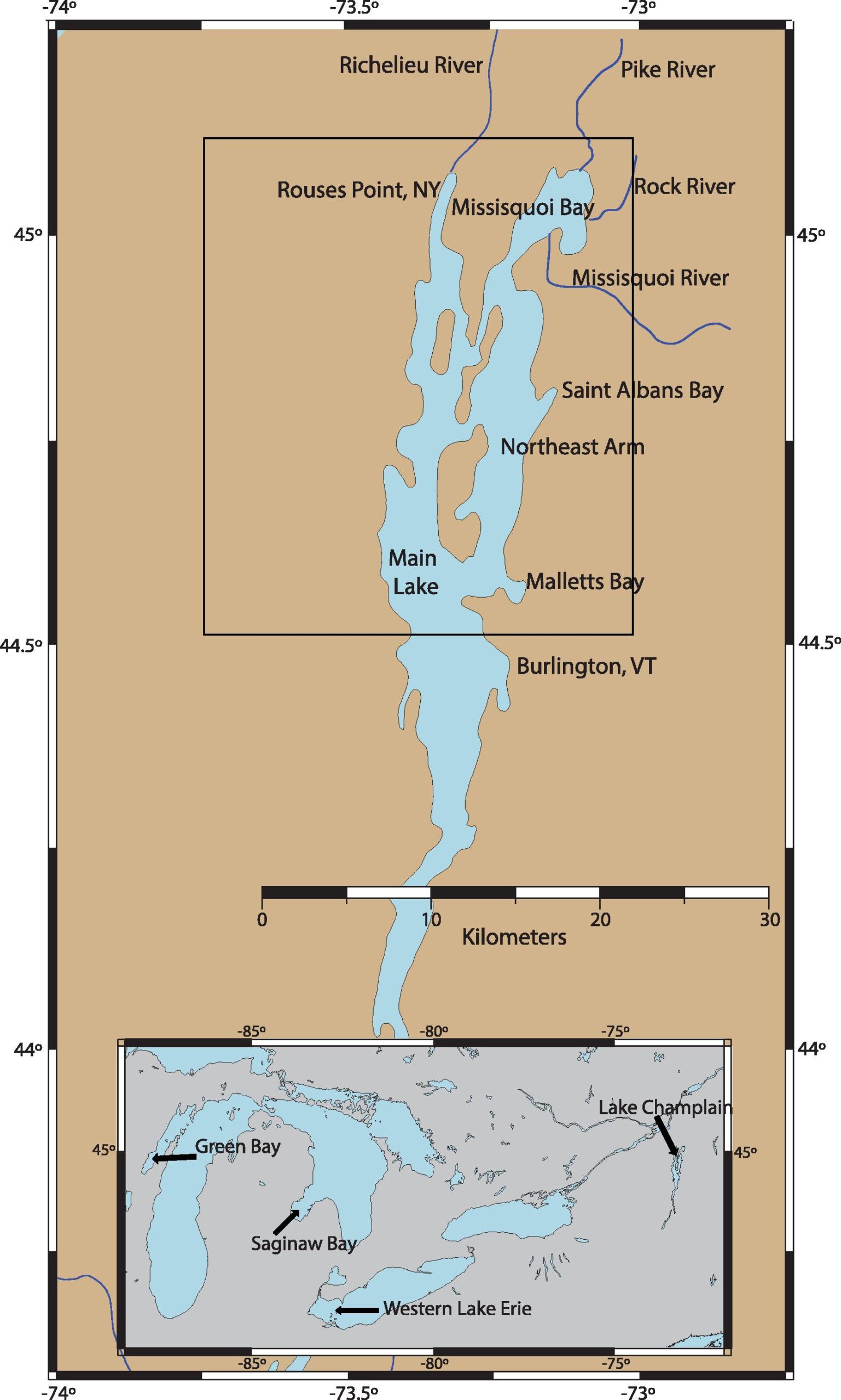
A new paper compares the inter-annual variability of harmful algal blooms (HABs) in Missisquoi Bay in Lake Champlain with previously monitored water bodies in Green Bay, Wisconsin; Saginaw Bay, Michigan; and western Lake Erie. All three of these embayments showed a statistically significant relationship between bloom sizes and river discharge. However, this did not occur in Missisquoi Bay.
At 1270 km2, Lake Champlain is the 13th largest lake in the United States. Lake Champlain experiences annual blooms of cyanobacteria, particularly in Missisquoi Bay. Here, the Cyanobacteria Index, a previously published algorithm, was applied to satellite imagery. The resultant time-series described when and where cyanobacteria blooms generally occur. Five distinct regions of Lake Champlain were considered for analysis: Malletts Bay, the Northeast Arm, Saint Albans Bay, Missisquoi Bay, and the Main Lake. Saint Albans and Missisquoi Bay were the only basins shown to have consistent cyanobacteria blooms. Saint Albans Bay, due to its small size, was not an ideal fit for the methods used here, and the focus of this manuscript was Missisquoi Bay. The objective of this study is to explore the interannual variability of blooms in Missisquoi Bay and compare the variability to cyanobacteria blooms in Lake Erie, Saginaw Bay, and Green Bay. The blooms in Missisquoi Bay showed inter-annual variability in size, intensity, and start and end date. Observed data from the Burlington International Airport and modeled data from NASA’s Giovanni program were used in an effort to explain this bloom variability. A 2-parameter multiple regression model fit the cyanobacterial data well and showed that the interannual variability of blooms in Missisquoi Bay are a function of atmospheric instability and temperature and not river discharge. Interest at the State level has been expressed with having regular bloom forecasts generated for the Lake with this new understanding of the bloom’s dynamics. The article was recently published in the Journal of Great Lakes Research.
